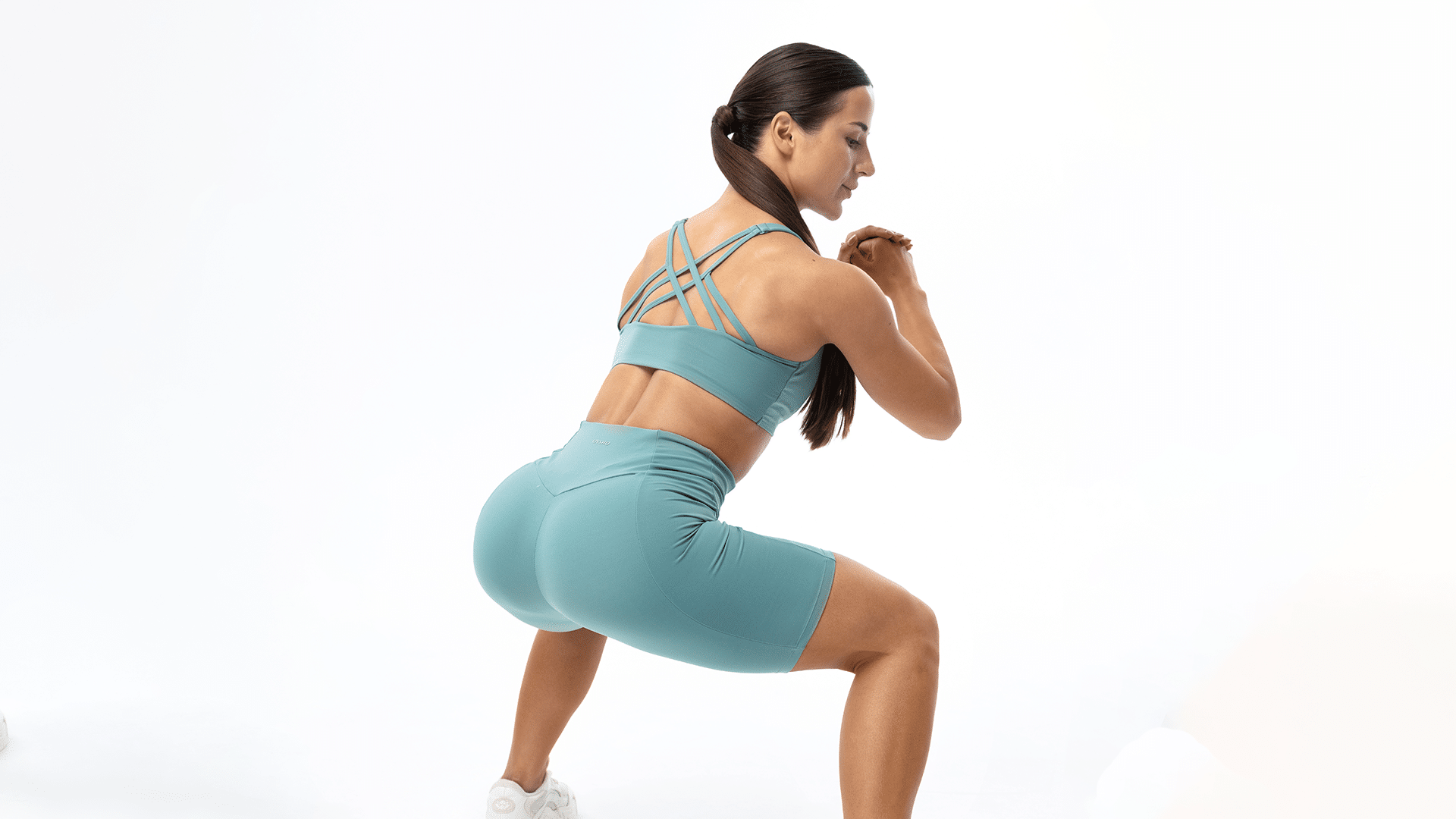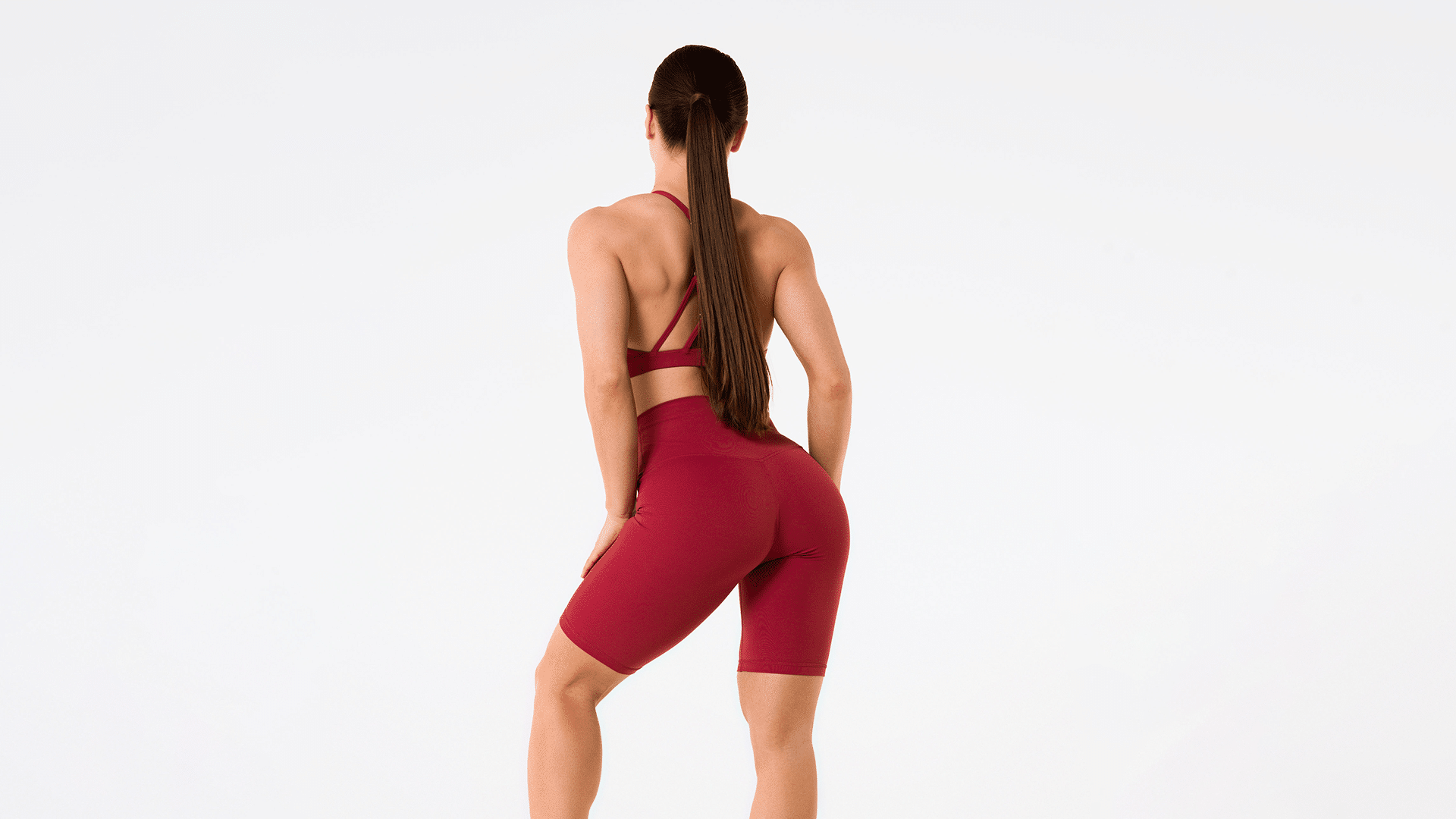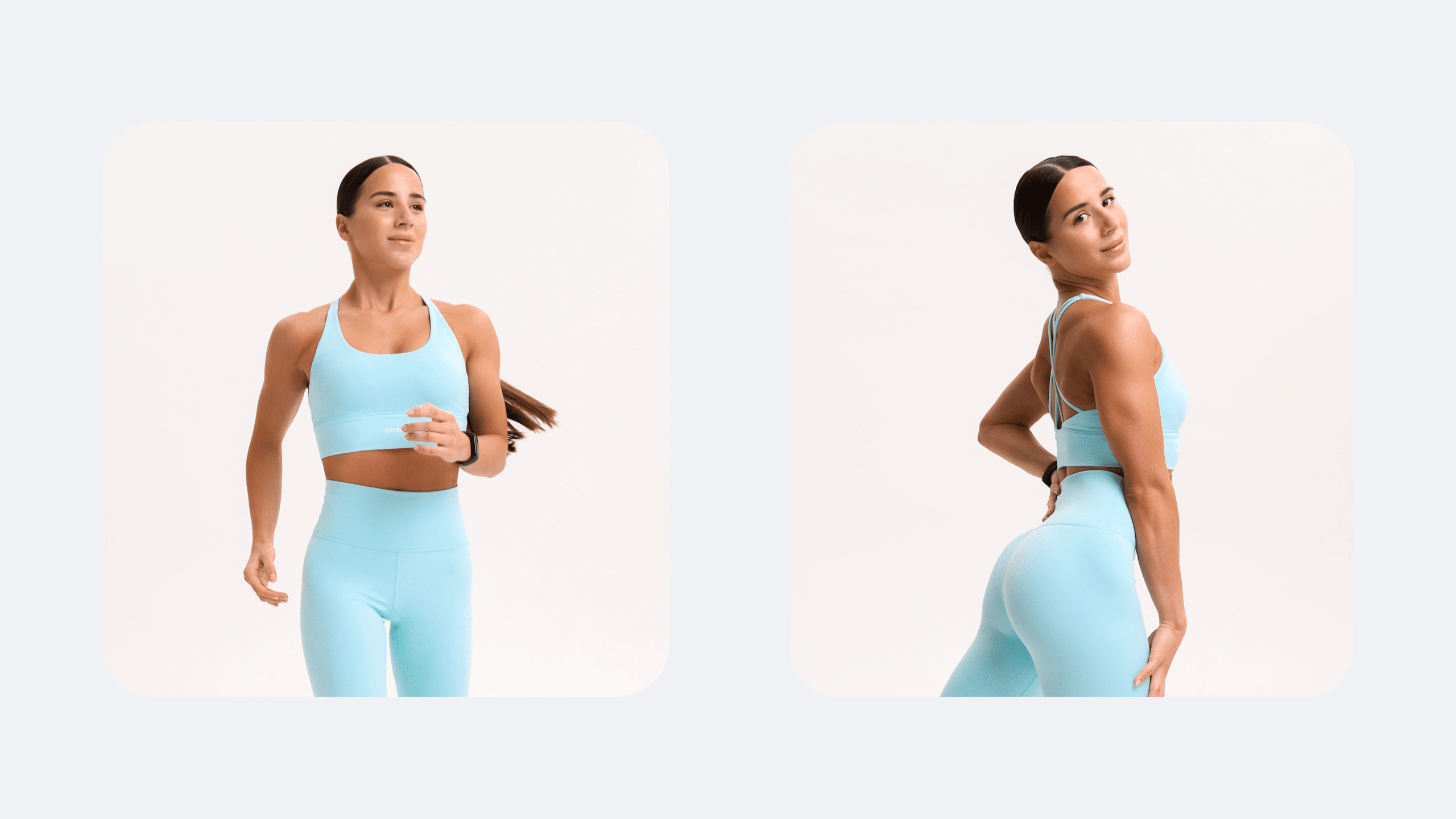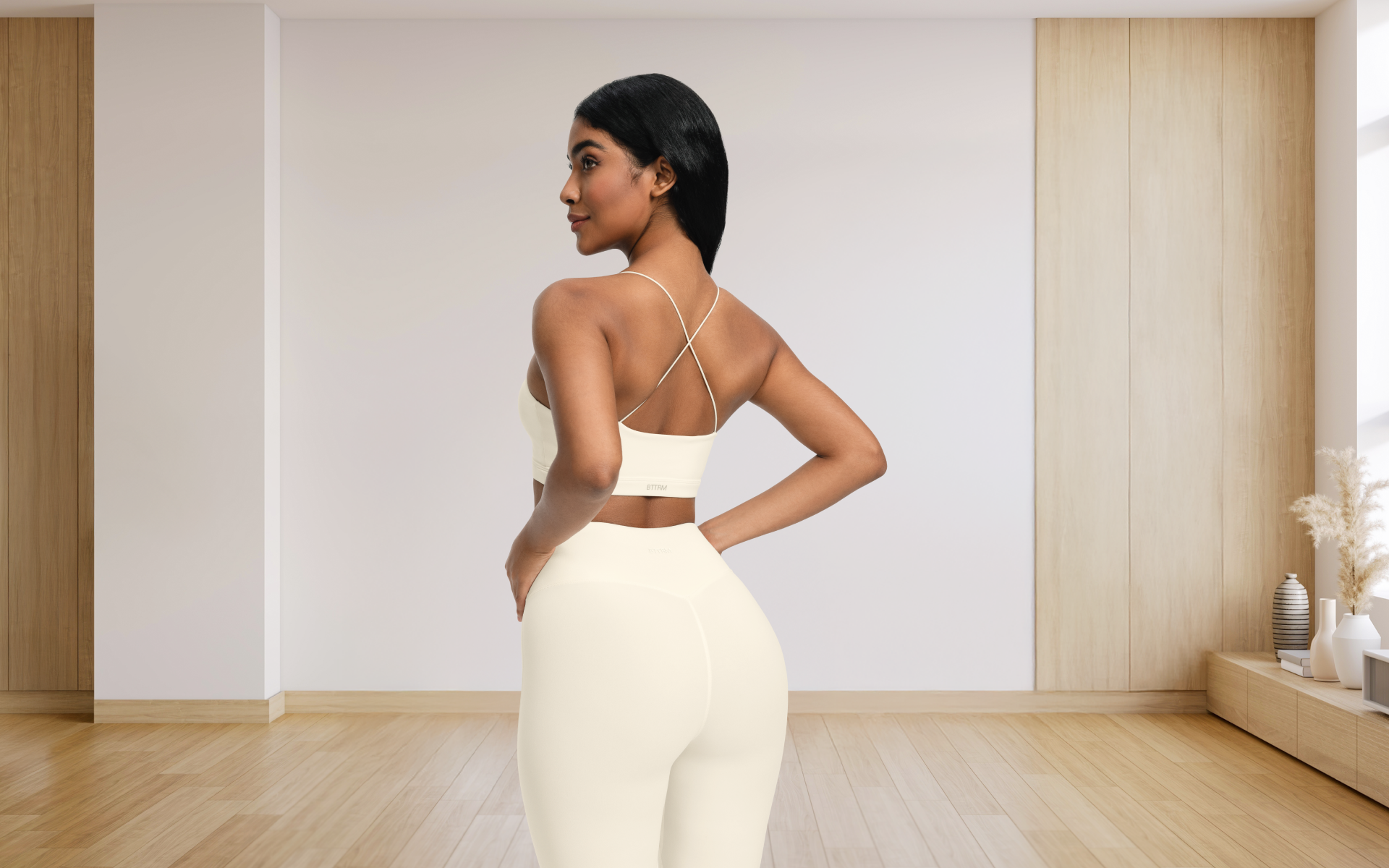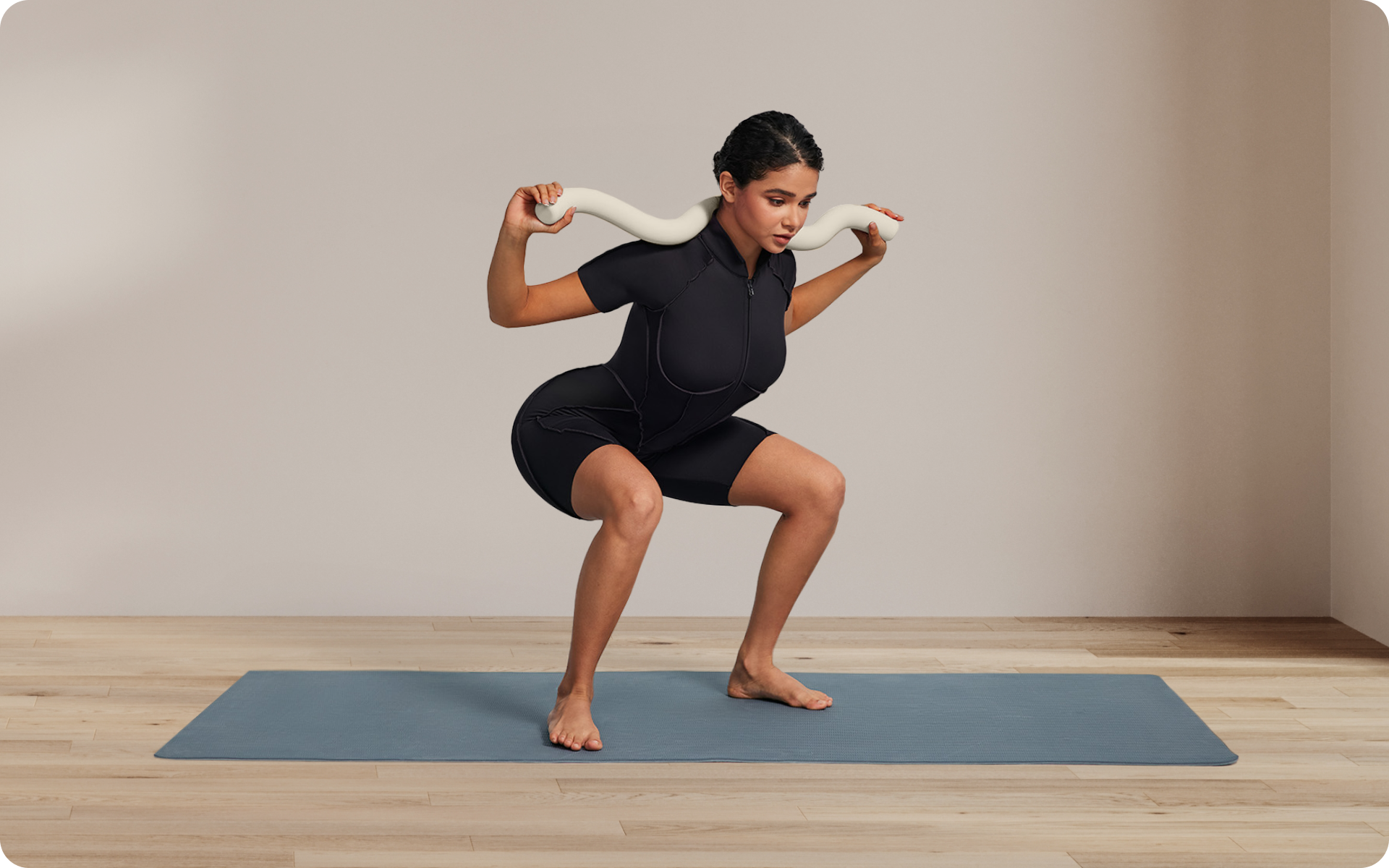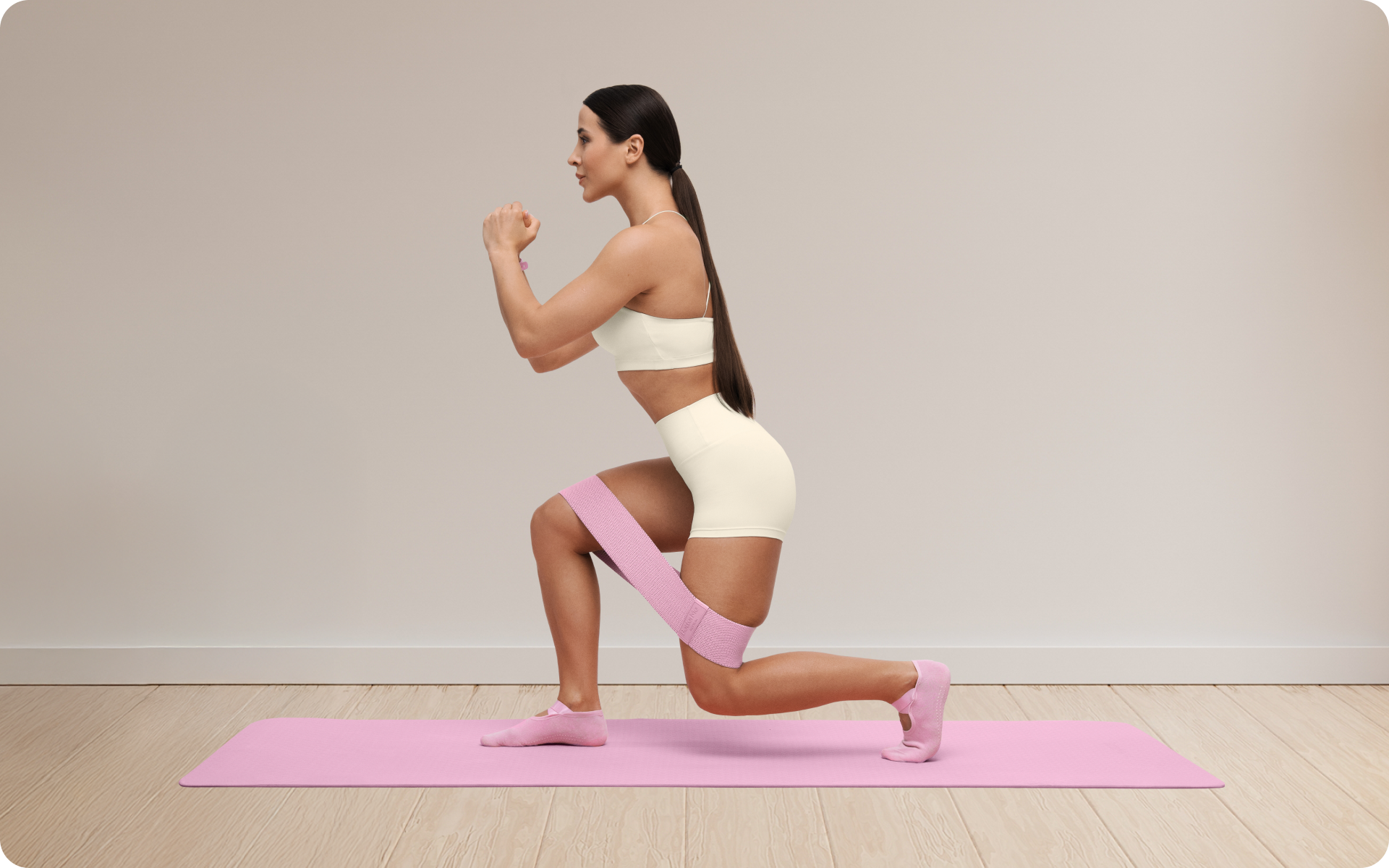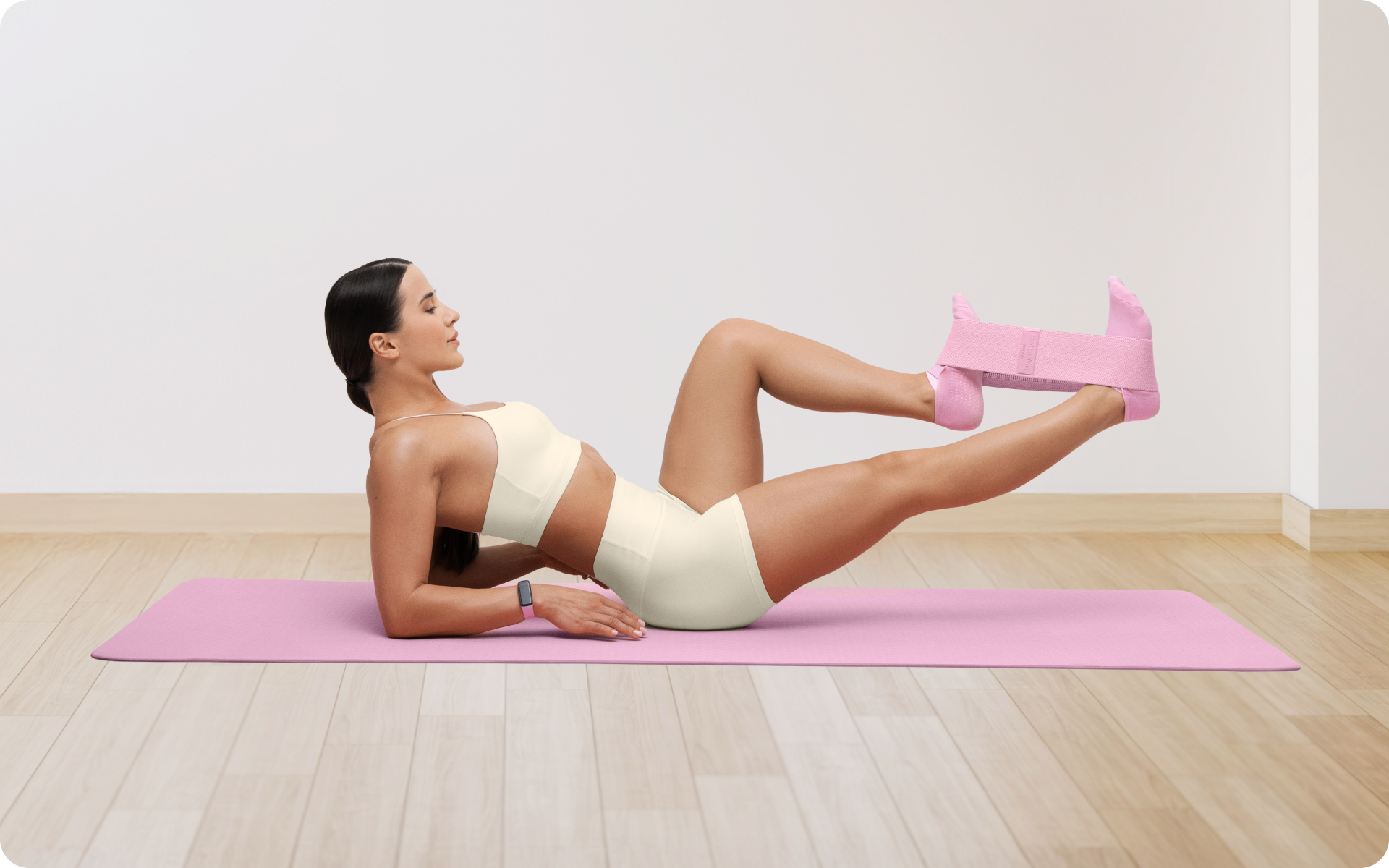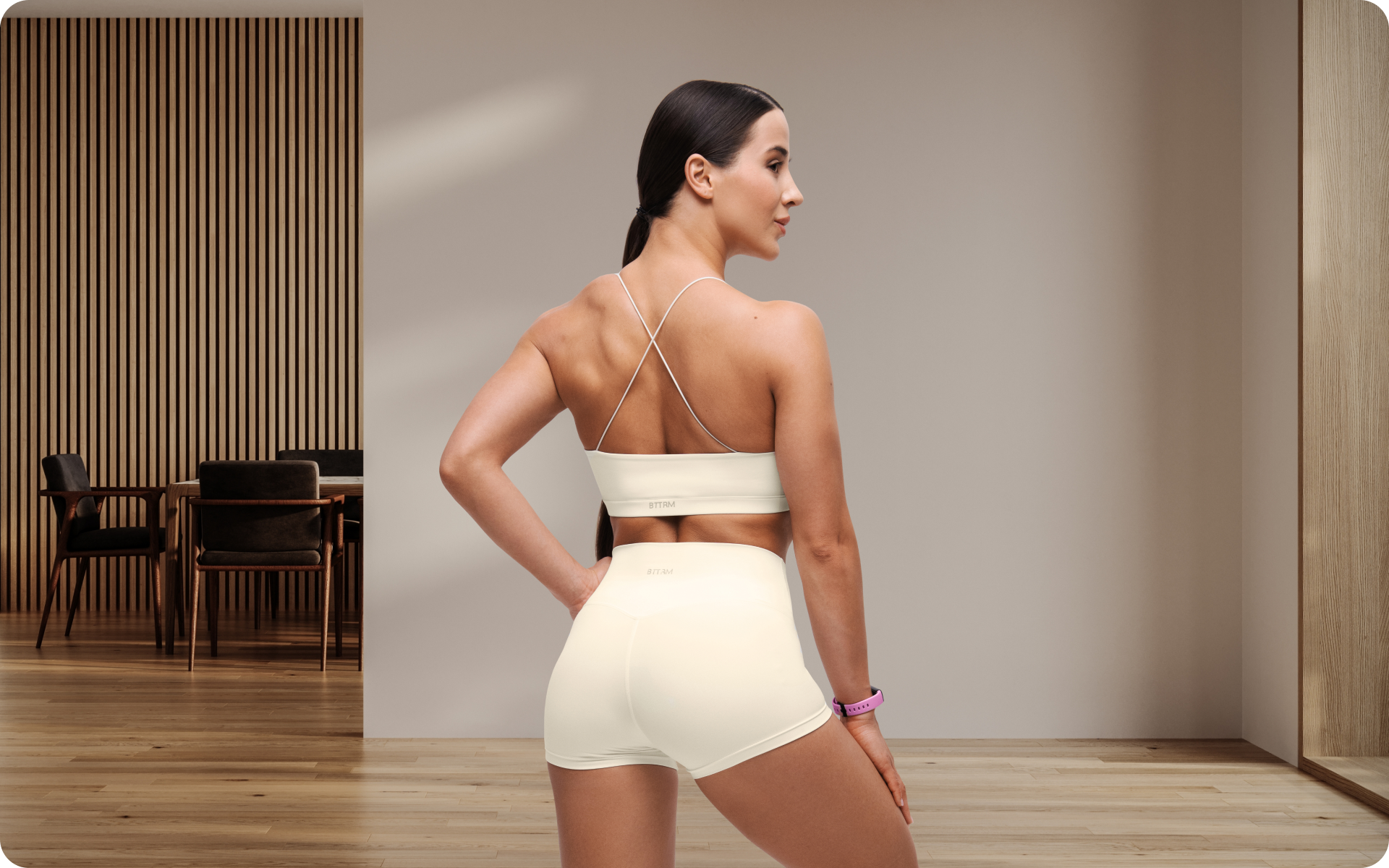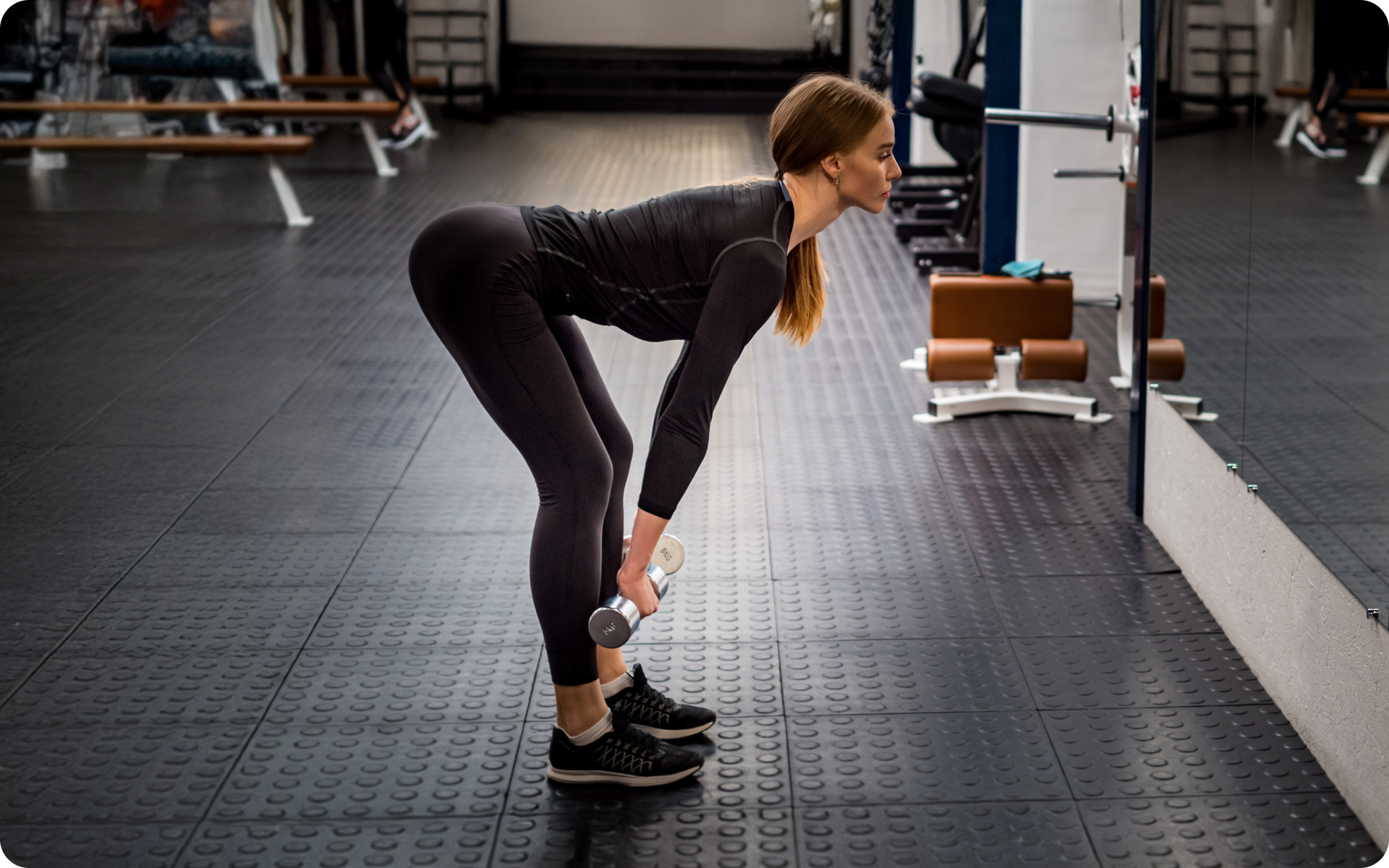You’re probably aware of the best exercises for your glutes: lunges, squats, deadlifts, and more. While these are excellent lower-body moves, there’s a case for adding glute-isolation activities to your workout mix.
Building power in your glutes helps you move and keeps your body aligned to support proper posture. This ultimately alleviates your chances of suffering from back pain, which in this century is particularly common among younger and older adults.
Therefore, we’re going to explore the practical moves for your home workouts that will strengthen your glutes and help sculpt a toned butt.
Do these glute isolation exercises at home and fire up your glutes.
What Are Glute Isolation Exercises?
Glute isolation exercises are specific movements that target only your glutes and involve movement of the hip joint. They can be a powerful tool to use alongside your larger glute compound exercises that encompass multiple muscle groups.
Glute isolation exercises are great for improving strength and increasing the amount of power you exert during weightlifting or difficult strength training routines. Incorporating glute isolation movements can help prevent imbalances and develop well-defined gluteal musculature.
What Are the Top 3 Glute Exercises?
We’ve encountered lots of effective glute exercises, but these are our personal favorites as they activate your glutes to the fullest. The best glute workout for beginners or advanced practitioners will require some space to complete your movements with a wide range of motion.
Adding weights is beneficial to enhance the difficulty, which will enhance the quality of performance. If you’re a newbie to this, you should avoid any loads, focus on proper form, and add weights as you get stronger.
We suggest that you warm up a bit before getting into the workout. Choose a dynamic warm-up as this improves agility, speed, and overall performance (1).
Read more: 10 Glute Activation Exercises To Warm Up With Before Your Lower Body Workout
Hip Thrusts
How to perform the movement:
- Sit on the floor, placing your upper back against a sturdy chair.
- Bend your knees, plant your feet on the floor, forming a “v” shape with your torso and thighs.
- Place the weight across your hips at the crease of your thighs, although this exercise will work well without any external weight.
- Forcefully drive your hips straight up, fully extending them as you raise your glutes away from the floor. Squeeze your glutes as you perform the extension.
- Hold for a count, then slowly hinge your hips, lowering them back toward the floor without touching down.
- Remember to brace your core throughout this movement. Lower-back injuries can occur if you don’t do this correctly.
Single-Leg Glute Bridges
How to perform the movement:
- Lie on a mat, bend your knees, and plant your feet flat on the floor.
- Engage your core as you start to lift your right foot from the ground.
- Squeeze your glutes, pressing them into the air as you extend your hips.
- Ensure your hips are fully extended and in line with your knees and shoulders.
- Lower your hips toward the floor, stopping just before your glutes touch the ground.
- Continue the movement for a full set before switching legs.
Reverse Hyperextension
How to perform the movement:
- Lie face down on a bench or sturdy chair.
- Keep your hips on the edge of the bench with your legs hanging off the edge.
- Bend your knees at 90 degrees.
- Squeeze your glutes to lift your legs up to form a straight line with your body.
- Lower with control back to the start position.
What Are the 4 Types of Glute Exercises?
There are 4 movement types for training your glutes:
- Squats and Lunges. These types of movements work your gluteus maximus (the biggest glute muscle). To perform this, you’ll want to bring your thighs down to an almost 90-degree angle from the floor while also keeping your chest upright. There are different squatting and lunge exercises you can experiment with.
- Hip hinges. Hip hinges focus on the gluteus maximus and fire up your hamstrings, giving you a more defined booty. Remember to squeeze your glutes at the top of this movement to get the most out of this exercise.
- Bridges. They are perfect for engaging your gluteus maximus, gluteus medius, and gluteus minimus, which can help give your glutes a full look.
- Abductions/ adductions. Abductions require your leg to move away from the midline of your body, while adductions will bring your leg into the midline of your body. It’s a laser-focused isolation exercise that works on your gluteus medius and gluteus minimus.
Our previous post goes into great detail about different types of butts.
How to Perform the Perfect Squat
Firstly, you should focus on the mind-body connection using your glutes for better squat movement. There are additional hacks for you to complete a perfect squat:
- Keep your torso straight. Avoid bending forward or arching your back. Try to keep a neutral spine by engaging your core.
- Maintain a neutral pelvic tilt. Avoid tucking your pelvis in during the squat position, as this can cause lower-back injury.
- Align your knees with your toes. Keep your knees in line with your toes rather than driving them inward.
- Gaze forward. Don’t look down to avoid excess strain on your neck.
Finally, always start your workout with a 10-minute active warm-up to prepare your muscles for dynamic movements.
Read more: Should You Do Bodyweight Squats Every Day?
Do the Glutes Need to Be Isolated?
It’s beneficial for you, but it’s not necessarily a requirement. However, depending on your goals, glute isolation exercises can be an incredible tool in your exercise program. According to the International Journal of Sports, glute-activation exercises can be useful if you’re dealing with a specific muscle weakness or if you’re in the early phase of treatment after suffering an injury (2).
As referenced in the American Council on Exercise, doing single-joint actions in the early stages of a corrective exercise program can help you not overload your nervous system and prevent improper movement patterns (3).
In addition, stronger glutes can help you move better as they support your upper body. Daily activities, such as sitting, standing, or lifting something require healthy functioning of your glutes.
In addition, glutes stabilize your spine, and when they’re weak, this can lead to back pain, particularly in the sedentary era where people spend a lot of time sitting at their desks. Isolating your glutes can make them stronger and reduce the risk/occurrence of back pain.
If you’re curious about calisthenics for glutes, check out our earlier article.
How Do You Train Your Lower Glutes?
Check out these 4 lower-glute dominant exercises that challenge the division of the gluteus maximus.
Romanian Deadlifts
- Stand tall with your feet underneath your hips. Hold your weight in front of your thighs.
- Draw your hips behind your heels with your back straight. Keep your knees directly above your heels.
- As you lower the weight, your shoulder blades need to be drawn toward each other. Feel the stretch in your hamstrings.
- When the weight is below your knees, drive your hips forward to the starting position.
Reverse Lunges
- Stand with your feet shoulder-width apart. Squeeze your glutes and shoulder blades as you look forward.
- Step one leg back, landing with your toe. Keep your chest in an upright position.
- Push off the ground with your front foot, placing your rear leg forward into the starting position. Squeeze your core to stay balanced.
If you tend to let yourself off the hook, raise the white flag when things get tougher than you expected, send yourself on an unconscious binge-eating trip – BetterMe app is here to help you leave all of these sabotaging habits in the past!
Bulgarian Split Squats
- Stand 2-4 feet in front of a bench, facing away from it.
- Place one leg on the bench behind you and keep your feet in line with your hips.
- Sink your body down until the knee of your back leg almost touches the ground.
- Ensure your front knee is at a right angle.
Single Leg Press
- Load the machine with an appropriate weight. Seat yourself on the machine and plant one foot on the platform in line with your hip. Place your free foot on the ground.
- Fully extend the knee and unlock the sled. This is your starting position.
- Lower the weight by slowly bending your knee. Avoid allowing your lumbar to take the load by moving your pelvis.
- At the bottom of the movement pause for two seconds and return to the starting position by extending your knee.
- Complete 10 repetitions and switch to the other leg.
To learn more about the workout for lower butt, check out our in-depth article on the topic.
Are 3 Exercises Enough For the Glutes?
3 exercises may be enough to train your glutes if you’re just starting out. The best bodyweight glute exercises may encompass only a few truly powerful movements. Repeating them for a couple of sets and progressing with your repetitions can help you fire up your glutes.
However, if you’re an avid sports practitioner, these three exercises will likely not be enough for you over time, and you may want to spice things up with other movements. For example, glute isolation exercises with weights or compound exercises that require multiple muscles working together at once.
It’s all up to you and your readiness to contribute more time and energy to your workouts.
Whether you’re a workout beast or just a beginner making your first foray into the world of fitness and dieting – BetterMe has a lot to offer to both newbies and experts! Install the app and experience the versatility first-hand!
FAQs
Does squeezing the glutes while performing lower-body exercises help you gain strength in these muscles?
Yes, some exercises require you to squeeze your glutes at certain points in the movement. Doing this may be effective for growing a toned butt and building strength. This is because squeezing can activate the glute muscles at greater power while also improving stability and balance.
Are glute bridges a compound or isolation exercise?
Glute bridges are more of a compound exercise than an isolation exercise. This exercise can help increase glute size and strength. In comparison, single-glute bridges are more isolation exercises as they isolate each side of the glutes to help build strength and balance.
Is a hip thrust compound or isolation for glutes?
Hip thrusts are compound movements that target the glutes but also place focus on the core, hamstrings, and quadriceps. This ultimately turns this exercise into a compound training that engages multiple muscle groups at the same time.
The Bottom Line
Glute isolation exercises are specific movements that target only your glutes and involve movement of the hip joint. You’ve uncovered the main perks of doing glute-isolation movements and great compound exercises to perform at home.
Perform these glute isolation exercises together with compound exercises at home and fire up your glutes. Remember that it’s not about the quantity but the quality of each exercise. A dynamic warm-up and proper form are the keys to achieving your glute strength.
DISCLAIMER:
This article is intended for general informational purposes only and does not serve to address individual circumstances. It is not a substitute for professional advice or help and should not be relied on for making any kind of decision-making. Any action taken as a direct or indirect result of the information in this article is entirely at your own risk and is your sole responsibility.
BetterMe, its content staff, and its medical advisors accept no responsibility for inaccuracies, errors, misstatements, inconsistencies, or omissions and specifically disclaim any liability, loss or risk, personal, professional or otherwise, which may be incurred as a consequence, directly or indirectly, of the use and/or application of any content.
You should always seek the advice of your physician or other qualified health provider with any questions you may have regarding a medical condition or your specific situation. Never disregard professional medical advice or delay seeking it because of BetterMe content. If you suspect or think you may have a medical emergency, call your doctor.
SOURCES:
- The Best Warm-Up Is a Dynamic Warm-Up (2023, nytimes.com)
- ASSESSING AND TREATING GLUTEUS MAXIMUS WEAKNESS – A CLINICAL COMMENTARY (2019, ncbi.nlm.nih.gov)
- Strengthening Techniques for Alleviating Muscle and Joint Pain (Part 3) (2015, acefitness.org)



